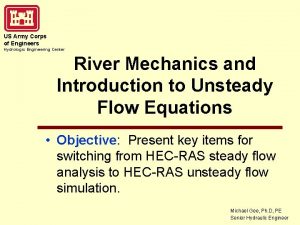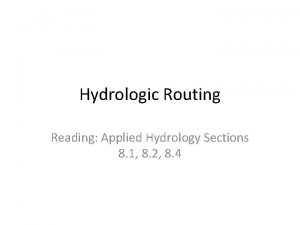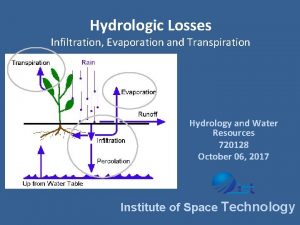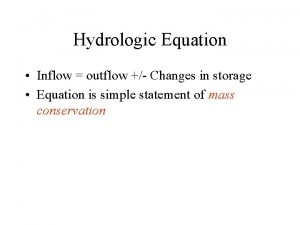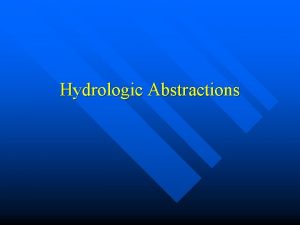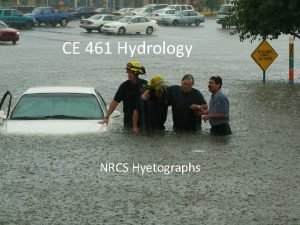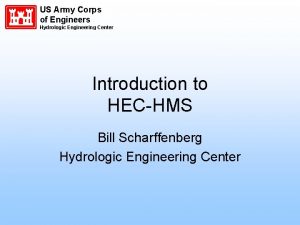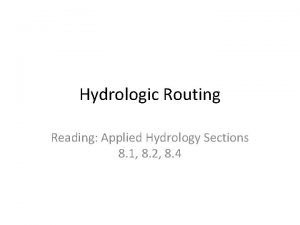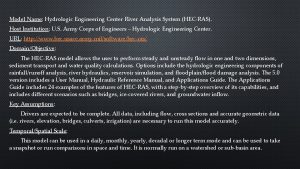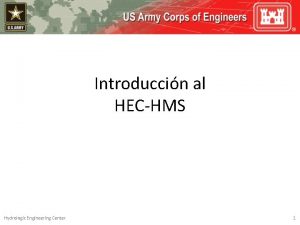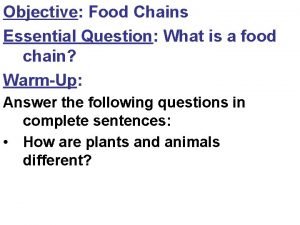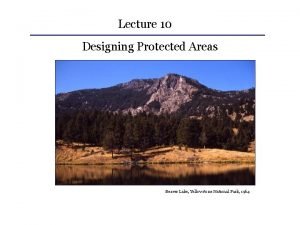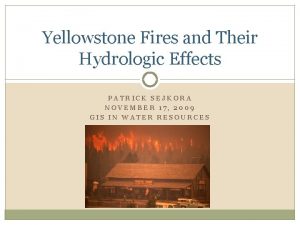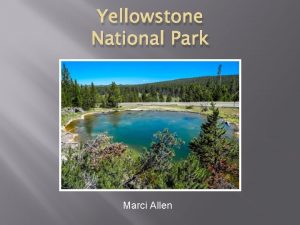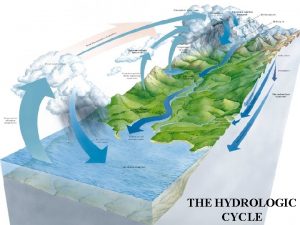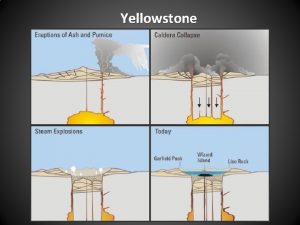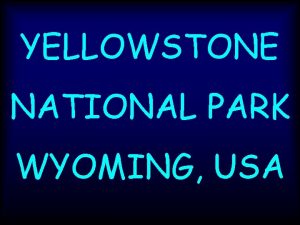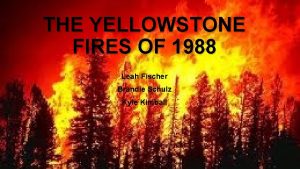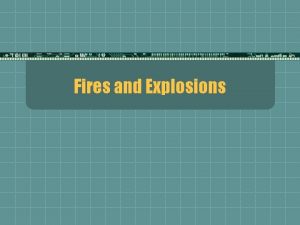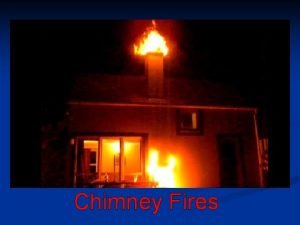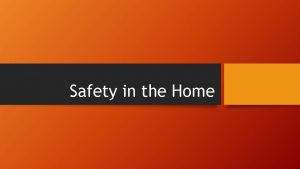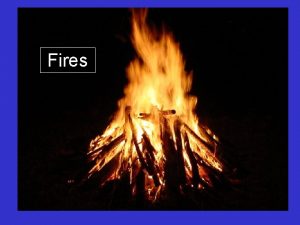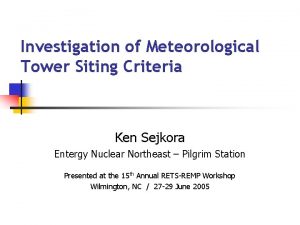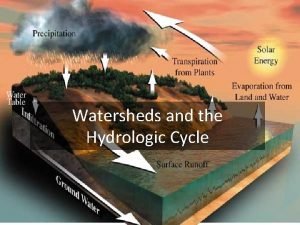Yellowstone Fires and Their Hydrologic Effects PATRICK SEJKORA
















- Slides: 16

Yellowstone Fires and Their Hydrologic Effects PATRICK SEJKORA NOVEMBER 17, 2009 GIS IN WATER RESOURCES

Yellowstone National Park 1988 Fires � 1988 driest summer on record � 7 major fires burned June. September 1988 � 3, 215 km 2 (36% of park) burned 485 km 2 on August 20 alone! �Fires extinguished in September by rain/snow

Objectives �Did fires augment surface water runoff regimes in Yellowstone? �Hypothesis: Evapotranspiration and infiltration rates decrease in burned areas 1, increasing runoff �Evaluate using runoff ratio: �Is runoff ratio post-fires higher than pre-fires? 1. Robichaud 2000

Firehole River GIS DATA v. Park outline and Digital Elevation Map (DEM) v. NHD Flowlines and USGS Gage Sites v. Burn Type Raster v. Compare runoff ratios between heavily burned and unaffected (control) watersheds v v Before Fire After Fire Boundary Creek

Firehole River (burned/ experimental watershed) v. Baseflow 7. 37 m 3/s v 724 km 2 watershed (obtained with Arc. Hydro Terrain Preprocessing) r be m pt e ov e N ly Ju Se ay M h ar c gage Mean flow M v 4 th order stream at ar y 0. 40/km 16 14 12 10 8 6 4 2 0 Ja nu v. Drainage Density of Flow (m 3/sec) v 288 km NHD flowline

Boundary Creek (unburned/ control watershed) v. Baseflow 1. 94 m 3/s v 224 km 2 watershed v 151 km NHD flowline m be N r ov em be r ly pt e Ju Se ay M h ar c M gage order stream at Mean flow ar y v 3 rd 8 7 6 5 4 3 2 1 0 Ja nu 0. 68/km Flow (m 3/sec) v. Drainage Density of

Firehole River Boundary Creek 4%4% 1% 1% 0% Canopy burn Mixed burn 21% Nonforested burn 63% 14% 1% 0% Undifferentiated burn 1% 90% Water Unburned

Precipitation Data v Find similar precipitation events before and after 1988 fires v Obtain data from National Climactic Data Center v Interpolate rainfall across park via Spline

Pre-1988 Precipitation Event v Spline raster can be used to estimate rainfall across watersheds v Zonal Statistics Tool in Spatial Analyst Average Precipitation Across Watersheds July 10, 1987 0. 5 cm 0. 6 cm September 18, 1989 1. 6 cm July 11, 1987 1. 7 cm 1. 6 cm

Storm Event Flow Conditions 8, 3 7, 8 7, 3 6, 8 7. 2. 1 7. 7 . 19 87 7. 12 . 19 87 7. 17 . 19 8 2, 4 2, 3 2, 2 8, 8 8, 3 7, 8 7, 3 6, 8 9. 1 2, 1 2 1, 9 7. 2 7 . 19 Discharge (m 3/sec) Discharge (m 3/s) 987 Post-Fire Boundary Creek 8, 8 Discharge (m 3/sec) Discharge (m 3/s) Pre-Firehole River 9 9 9 1. 19. 13. 1. 15. 19. 17. 19. 1. 21. 1. 23. 1 89 989 989 89 87 7. 12 . 19 7. 17 . 19 87 87 87 2, 35 2, 25 2, 15 2, 05 1, 95 9. 1 1. 19 89 9. 1 6. 1 989 9. 2 1. 19 89 9. 2 6. 1 989

Runoff Ratios Runoff Ratio Example Calculation (Boundary Creek 9/18/1989) Firehole River Boundary Creek Pre-Fire RR = 1. 1% Post Fire RR = 0. 9% These Runoff Ratios aren’t very different!

Conclusions �Runoff Ratios before and after fire are indistinguishable in burned watershed �An event’s runoff ratio same for both watershed �Suggests other factors besides landcover may influence runoff regimes Antecedent dry period, storm intensity, etc. ?

Future Work �Evaluate other storm events using same methodology NEXRAD precipitation data for recent events �Similar effects for snow melt?

Questions?

Firehole River Engelmann Pygmy Spruce & Lodgepole Subalpine Fir, Pine climax 1% 2% Lodgepole Pine, successional 66% Boundary Creek Lodgepole Pine, post disturbance 1% Lodgepole Pine, climax 25% Lodgepole Pine, climax 9% Pygmy Lodgepole Pine 36% Nonforested 5% Douglas Fir, climax 1% Engelmann Spruce & Subalpine Fir, climax 2% Nonforested 14% Lodgepole Pine, successional 37%

Firehole River Engelmann Pygmy Spruce & Lodgepole Subalpine Fir, Pine climax 1% 1% Lodgepole Pine, successional 34% Boundary Creek Lodgepole Pine, post disturbance 1% Lodgepole Pine, climax 20% Pygmy Lodgepole Pine 36% Nonforested 6% Lodgepole Pine, post disturbance 38% Lodgepole Pine, climax 9% Douglas Fir, climax 1% Engelmann Spruce & Subalpine Fir, climax 2% Nonforested 14% Lodgepole Pine, successional 37%
 Forest fires causes and effects
Forest fires causes and effects Hydrologic routing and hydraulic routing
Hydrologic routing and hydraulic routing Hydrologic engineering center
Hydrologic engineering center River routing and reservoir routing
River routing and reservoir routing Hydrologic routing
Hydrologic routing Infiltration
Infiltration Hydrologic equation
Hydrologic equation Hydrologic abstractions
Hydrologic abstractions Objectiveable
Objectiveable Hydrologic continuity equation
Hydrologic continuity equation Hydrologic engineering center
Hydrologic engineering center Water cycle the hydrologic cycle
Water cycle the hydrologic cycle Hydrologic routing
Hydrologic routing River analysis system
River analysis system Hydrologic engineering center
Hydrologic engineering center Objective of food chain
Objective of food chain Beaver lake yellowstone
Beaver lake yellowstone


